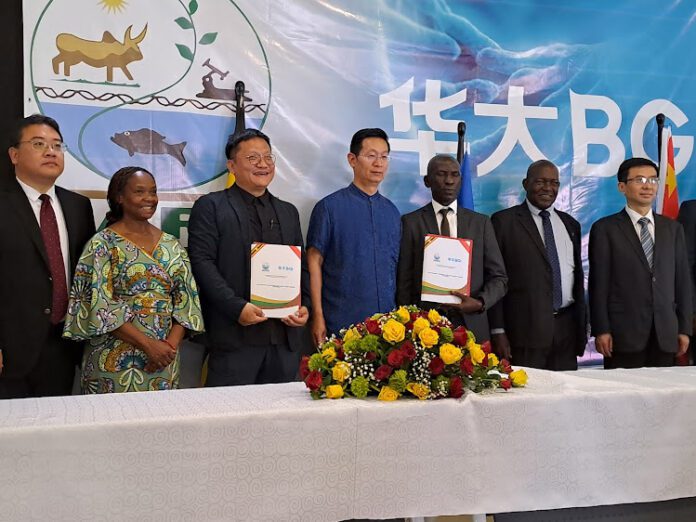
In partnership with Uganda, China is developing strategies to fight climate change through the formation of bamboo training and plantation projects in Uganda.
The project will include other agricultural activities such as livestock, crops, and fisheries, which will focus specifically on perennial rice to enable farmers to make multiple harvests from the same planting.
Bamboo is a crucial element in the balance of oxygen and carbon dioxide in the atmosphere; a grove of bamboo releases 35% more oxygen than an equivalent stand of trees. Because of this, planting bamboo is a great way to reduce your carbon footprint in Uganda and also help fight global warming.
According to the Director General of the National Agricultural Research Organization (NARO), Yonah Baguma, Uganda, together with a team from the Chinese Embassy, are in high gear to unveil the construction site for the China-Africa Center for Excellence at the National Crops Resources Research Institute (NACRRI) in Namulonge, north Kyaddondo in Wakiso district.
“Uganda already allocated land for the project where experts will be establishing demonstration centers to teach local farmers. I believe this is just the start, as experts will be staying here for three years, and in the future we hope there will be more follow-up programs in the bamboo industries,” he said.
He added during the launch of the China-Africa Centre of Excellence at the National Crops Resources Research Institute (NaCCRI) in Namulonge that bamboo products are widely used in infrastructure like house floors, furniture, chairs, desks, beds, and many more.
Baguma added that these varieties, after training in Uganda, will increase productivity, reduce drudgery at farm level, and ensure sustainable food security, sustainable food transformation, and food nutrition health for Ugandans, regions, and the whole world because technology will enable adaptation to changing climatic conditions.
The Chinese Ambassador to Uganda, H.E Zhang Lizhong, said that the Chinese government has finalized plans to send experts in bamboo growing to Uganda to expedite the projects.
“We will send a group of about nine agricultural experts in bamboo momentarily to help train the farmers to grow the bamboo in Uganda,” he said.
Read Also: China-Africa Centre for Perennial Rice Technology to Increase Food Security
The Principal Research Officer (NARO), Jimmy Lamwo, who doubles as a rice breeder, said that this variety of perennial rice was developed by scientists from Human University in China in collaboration with NARO.
“This perennial rice is suitable for Africa because our land needs more persistent crops,” he said.
During the recent 2024 forum on China-Africa Cooperation Summit, China announced 10 partnership initiatives or actions covering 10 areas of cooperation between the Asian nation and East African country in the coming few years. Among these are the partnerships for agriculture and livelihood.
Under this partnership, China will inject in Africa over US$140 million in emergency food assistance, build 6,600 hectares of standardized agricultural demonstration areas, and the Ugandan government is to allocate additional funds to support the project, waiting to welcome over 500 agricultural experts to establish a China-Africa Agricultural Science and Technology Airlines.
Uganda will, therefore, have bamboo forests to boost the performance of different fan designs with multi-bladed, twin-layered design with several advantages over conventional designs containing a higher value of air flow rate at comparatively lower speeds.














